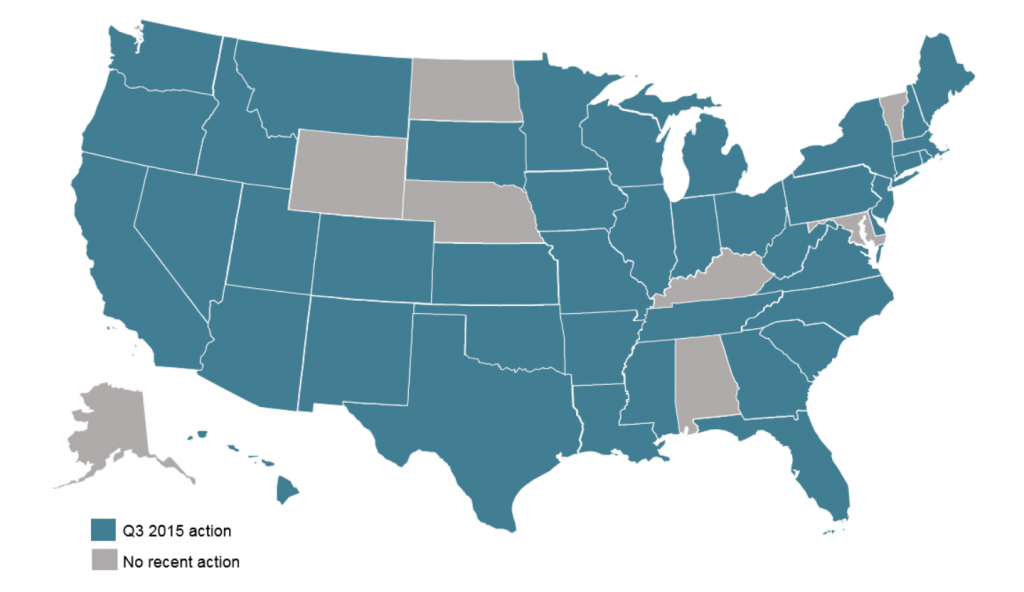Industry
When Policy Changes Impact Solar Savings
By Tarpan Dixit
| Reading time 1 minute
Net energy metering (NEM) has been a critical driver in the growth of residential solar over the past decade. There is an ongoing debate between utility companies and proponents of solar energy as to whether net metering at retail rates is the appropriate value to place on residential rooftop solar. Per a recent report by N.C. Clean Energy Technology Center, net metering is currently under review in 27 states. Utilities have proposed various modifications to retail NEM including the addition of fixed charges, interconnection fees, and consumption based charges. As of Q3 2015, 42 states have proposed or implemented policy changes impacting solar.
 Figure 1. Recent Action on Net Metering, Rate Design, and Solar Ownership Policies
Figure 1. Recent Action on Net Metering, Rate Design, and Solar Ownership Policies
Fixed Charges in APS
As part of Genability’s commitment to provide the most accurate forecasted savings, we make sure to update our technology and data to account for any changes that occur. In 2014, Arizona Public Service (APS) introduced the first solar surcharge for new solar customers, assessing a fixed charge of $0.70 per kW installed every month. A customer with a new 5 kW(DC) system in APS will pay an additional fixed charge of $3.50 per month after installation. This decreases the avoided cost of power by 0.5¢/kWh and adds up to over $1000 in additional post-solar costs over 20 years.
How Do I Include These Charges in a Savings Analysis?
Within Switch this charge is driven by a property on the solar profile, keyed as systemSize, and measured in kW(DC). Genability customers who use our integrated PVWatts API to calculate solar production will automatically have the systemSize populated on their solar profiles and subsequently in their savings calculations.
For those API customers who pass us either monthly readings or hourly solar production baselines (using the hourly baseline is better and encouraged) for their solar profiles, it is easy to include system size when you add and update your solar profile. Just include the systemSize property:
"properties" : {
"systemSize" : {
"keyName" : "systemSize",
"dataValue" : "5"
}
}
By always including systemSize with your solar profiles you ensure that your Switch calculations are precise and you can deliver the savings you promise your customer. We’ll continue to monitor solar policy and make necessary changes to our services so that you always have accurate savings information.
Also in Industry
Significantly Reducing America's Carbon Footprint
By Tarpan Dixit | Aug 13, 2015
Summer's Effect on Household Electricity Bills
By Kevin Timms | Jul 30, 2015
California Rate Reform, the Utility Death Spiral and the Duck Curve
By Justin Lee | Jul 20, 2015
The Environmental Protection Agency's Groundbreaking Power Plant Regulation
By Gabe Goffman | Jun 4, 2014

